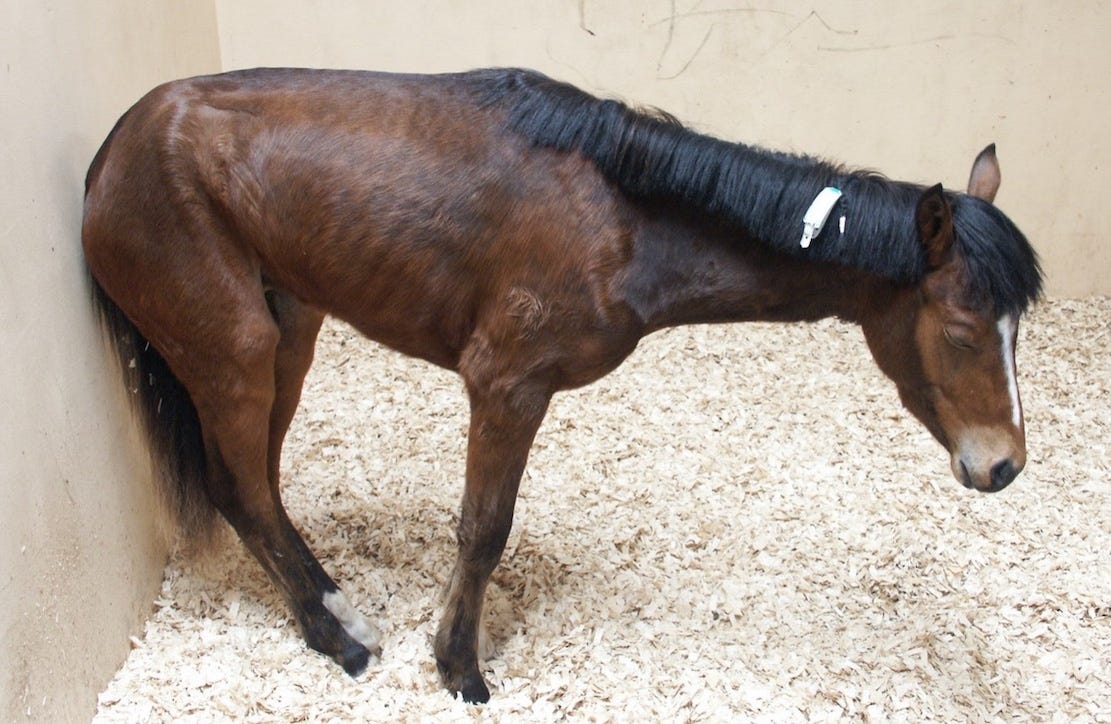Researchers identify probable cause of equine grass sickness
Breakthrough has the potential to lead to novel treatments and improved diagnostics
Researchers have identified the probable cause of equine grass sickness as a neurotoxin, with similar actions to snake venom toxins, but produced by pasture microbes. The breakthrough has the potential to lead to novel treatments and improved diagnostics for this devastating disease. Key aspects of the work are summarised in a special editorial in the January 2025 issue of the Equine Veterinary Journal (EVJ).
The editorial, by Bruce McGorum and colleagues, highlights the findings and implications of their article Equine grass sickness is associated with major abnormalities in the ultrastructure of skeletal neuromuscular junctions*. It is currently available on Early View and will also be published in the January 2025 print issue of the EVJ.

Hello and welcome to Horse&Field. Our aim is to support local, grass roots equestrian enthusiasts and competitors and keep you all informed of what’s happening in the horsey world, as well as covering all things agricultural. If you haven’t already subscribed you can do so below:
Equine grass sickness, a previously enigmatic disease, which kills approximately 1% of horses grazing in high-risk premises, was first reported in Tayside in 1907. Since then, it has been recognised throughout the UK, northern Europe, South America and very infrequently in North America; however, the disease remains most prevalent in Scotland. It causes rapid degeneration of nerves leading to paralysis of the entire gastrointestinal tract, inability to swallow, abdominal pain, muscle weakness, drooping eyelids, sweating, salivation and muscle tremors. As there is currently no effective treatment for the most severe (acute and sub-acute) forms of the disease, horses must be euthanised on humane grounds, typically within 24-48 hours of showing abnormal signs. In contrast, approximately 50% of horses with the mild (chronic) form of grass sickness survive with nursing and supportive care.
Researchers from the Dick Vet Equine Hospital, University of Edinburgh, Newcastle University, Istituto Zooprofilattico Sperimentale delle Venezie, and the University of Padova believe they have identified the neurotoxin which causes equine grass sickness. Electron microscopy revealed that affected horses have major abnormalities in the structure of their neuromuscular junctions, microscopic sites of communication between nerves and muscles that are crucial for normal muscle function. These abnormalities are believed to represent a toxin specific signature, effectively a ‘smoking gun’, for a neurotoxic enzyme termed a phospholipase A2.
Work is underway to definitively identify the source of this toxin. It is most likely to be produced by a microbe such as a bacterium or fungus growing on the horse’s pasture during the cold and dry weather which commonly precedes the disease.
Intriguingly, neurotoxic phospholipase A2 toxins are present in the venom of many poisonous snakes. Consequently, there are many similarities between the signs of grass sickness and those of snake envenomation. While there is no suggestion that venomous snakes cause grass sickness, it is hoped that some of the drugs that are currently being developed to treat and promote nerve regeneration in people paralysed by snake venoms can aid recovery of horses from grass sickness.
This neurotoxin most likely also causes the apparently identical diseases (termed animal dysautonomias), which affect cats, dogs, hares, rabbits, llamas, alpacas and sheep. This finding contradicts the previous leading hypothesis that grass sickness is a form of botulism.
Professor Bruce McGorum, R(D)SVS said: “Identifying a probable cause of Equine Grass Sickness represents a significant breakthrough. We hope that this discovery will lead to novel treatments and improved diagnostics for this devastating condition. We are very grateful for the generous support we have received from horse owners, veterinary surgeons, scientists, charities and funding bodies.”
“Further work is underway to determine the source of this neurotoxin; it is likely to be produced by a microbe such as a bacterium or fungus which grows on the horse’s pasture during the cold and dry weather, which precedes the disease.”
“EVJ is incredibly proud to play a small part in getting this information to vets and horse owners,” said Professor Celia Marr, Editor of the EVJ. “Speaking as an equine clinician, I know that this is a really important step towards addressing the high losses associated with equine grass sickness.”
The editorial can be found here. It is free to read for 12 weeks.
The article Equine grass sickness is associated with major abnormalities in the ultrastructure of skeletal neuromuscular junctions can be found here.
CASE STUDY
James Risk is Head of Glasgow Equine Practice and works as a first opinion vet. He is a member of the British Equine Veterinary Association’s Health and Medicines Committee.
He said: "As a vet, treating horses with grass sickness has been one of the most challenging and emotionally draining aspects of my career.
“The devastating nature of this disease, which strikes seemingly without warning, affects young horses with their whole lives ahead of them. What makes it particularly difficult is the helplessness felt by both vets and owners - constantly questioning every aspect of the horse's management, from weather conditions to feeding practices, searching for answers that weren't there. This breakthrough in identifying a probable cause represents hope for the future of treating this condition.”
“You feel a complete sense of helplessness and distress knowing there is very little that can be done," says Kirsty Miller, who lost her pony to grass sickness.
"For weeks after, you question yourself constantly, wondering whether you could have used a different field or made a change to the daily routine. It kills all your future aspirations - hopes are dashed when a perfectly healthy pony is taken by this cruel disease. Even months later, you still think about the pony.
“After years of feeling deflated by the lack of progress, it's wonderful to see this significant breakthrough."
Reference
*Neurotoxic phospholipase A2: a proposed cause of equine grass sickness and other animal dysautonomias (multiple system neuropathies)
https://beva.onlinelibrary.wiley.com/doi/10.1111/evj.14442
Authors - Bruce C. McGorum 1, R. Scott Pirie 1, Luca Bano 2, Tracey Davey 3, John B. Harris 4, Cesare Montecucco 5




